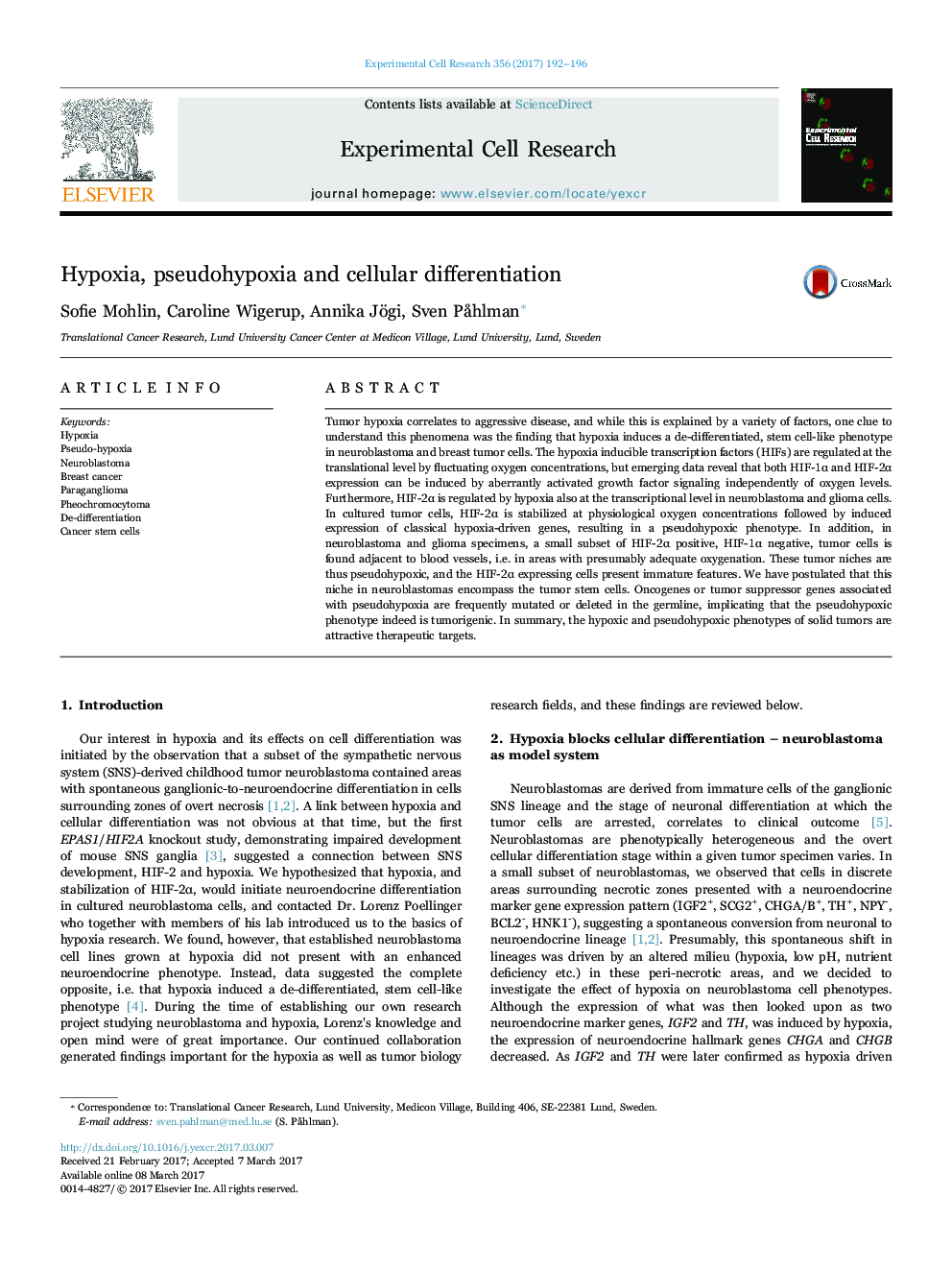| کد مقاله | کد نشریه | سال انتشار | مقاله انگلیسی | نسخه تمام متن |
|---|---|---|---|---|
| 5526936 | 1401556 | 2017 | 5 صفحه PDF | دانلود رایگان |
Tumor hypoxia correlates to aggressive disease, and while this is explained by a variety of factors, one clue to understand this phenomena was the finding that hypoxia induces a de-differentiated, stem cell-like phenotype in neuroblastoma and breast tumor cells. The hypoxia inducible transcription factors (HIFs) are regulated at the translational level by fluctuating oxygen concentrations, but emerging data reveal that both HIF-1α and HIF-2α expression can be induced by aberrantly activated growth factor signaling independently of oxygen levels. Furthermore, HIF-2α is regulated by hypoxia also at the transcriptional level in neuroblastoma and glioma cells. In cultured tumor cells, HIF-2α is stabilized at physiological oxygen concentrations followed by induced expression of classical hypoxia-driven genes, resulting in a pseudohypoxic phenotype. In addition, in neuroblastoma and glioma specimens, a small subset of HIF-2α positive, HIF-1α negative, tumor cells is found adjacent to blood vessels, i.e. in areas with presumably adequate oxygenation. These tumor niches are thus pseudohypoxic, and the HIF-2α expressing cells present immature features. We have postulated that this niche in neuroblastomas encompass the tumor stem cells. Oncogenes or tumor suppressor genes associated with pseudohypoxia are frequently mutated or deleted in the germline, implicating that the pseudohypoxic phenotype indeed is tumorigenic. In summary, the hypoxic and pseudohypoxic phenotypes of solid tumors are attractive therapeutic targets.
Journal: Experimental Cell Research - Volume 356, Issue 2, 15 July 2017, Pages 192-196
